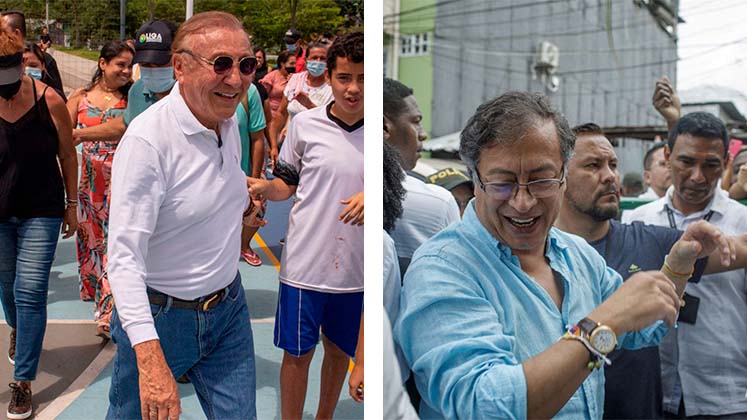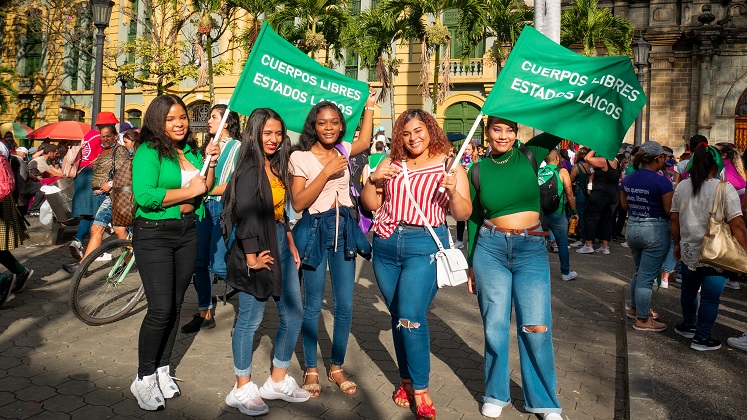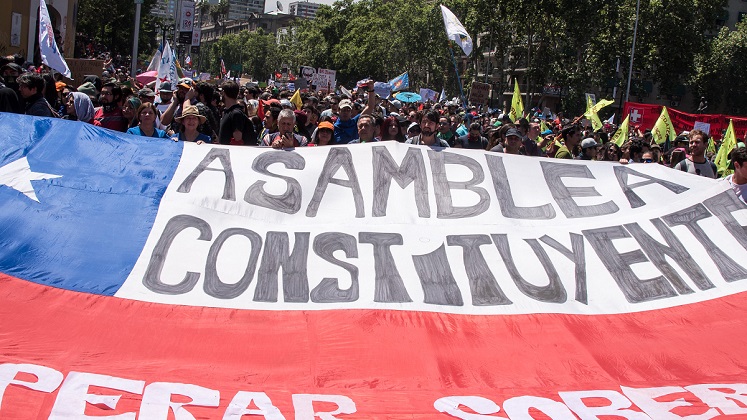 Shifts in the social and institutional conditions of the urban peripheries of Brazil’s major cities have altered political subjectivities and weakened affinities with the once-dominant Workers’ Party of Lula da Silva and Dilma Rousseff. With a “revolt of the peripheries” brewing, Bolsonaro was able exploit his comparative rhetorical advantage and win the presidency despite making few real commitments to address the economic plight of these areas, writes Matthew Aaron Richmond (Centro de Estudos da Metrópole, São Paulo, and LSE Latin America and Caribbean Centre).
Shifts in the social and institutional conditions of the urban peripheries of Brazil’s major cities have altered political subjectivities and weakened affinities with the once-dominant Workers’ Party of Lula da Silva and Dilma Rousseff. With a “revolt of the peripheries” brewing, Bolsonaro was able exploit his comparative rhetorical advantage and win the presidency despite making few real commitments to address the economic plight of these areas, writes Matthew Aaron Richmond (Centro de Estudos da Metrópole, São Paulo, and LSE Latin America and Caribbean Centre).
In the analysis following Brazil’s dramatic presidential election in late 2018, a significant aspect of the result has been largely overlooked. According to the broad-brush account, based on polling from the eve of the election and a state-by-state breakdown of the vote, there were two key aspects to the victory of far-right candidate Jair Bolsonaro.

First, he cannibalised the vote of the centre-right Party of Brazilian Social Democracy (PSDB) and expanded within demographics that it already dominated, namely voters on high and modest incomes concentrated in Brazil’s wealthier Southeast, South and Midwest regions.
And second, this left the centre-left Workers’ Party (PT), led by Fernando Haddad, relying on its shrinking base among low-income voters, mainly concentrated in the poor Northeast region.
The swing voters of the urban periphery
However, if we look at a finer scale and over time, we can see that many low-income areas located in wealthier regions of the country exhibit rather distinctive voting behaviour. These are the urban peripheries of some of the country’s largest metro areas, such as São Paulo, Rio de Janeiro, Porto Alegre, and Belo Horizonte.
These areas traditionally tended to back the PT and largely shunned the PSDB, but they have now heavily swung behind Bolsonaro. Unlike wealthy areas in the same cities (which have long voted against the PT) and poor peripheries in the Northeastern capitals (which still largely vote for the PT) these areas appear to contain significant numbers of swing voters. They were well represented in the winning electoral coalitions of Presidents Lula (2003-2010) and Dilma (2011-2016), and now also in Bolsonaro’s.
In municipal São Paulo, for example, the number of peripheral electoral zones that registered an absolute second round majority for the PT has fallen from 23 – practically all of them – in 2010, to ten in 2014, to just six in 2018.
In municipal Rio de Janeiro, the change was even more dramatic: in 2014, almost all peripheral electoral zones voted for the PT candidate Dilma Rousseff, while this time every one voted for Bolsonaro.
Just as with state-level aggregations, it would be easy to fall into the ecological fallacy; while some shifts in these electoral zones were dramatic, other headline victories for Bolsonaro were marginal and built upon inroads previously made by the PSDB.
More quantitative analysis is needed to assess exactly what numerical impact electoral shifts in the peripheries had on the overall result. Nonetheless, when we look at these metro areas as a whole – which show broadly similar shifts – it starts to look like a very large number of votes.
Unlike in the United States, Brazil’s presidency is decided by popular vote rather than electoral colleges, meaning that small shifts across the country all exert equal effect on the final outcome. Different to Trump’s victory in the 2016 US election then, we cannot identify a relatively small population as having decided the election.
Nonetheless, it is instructive to think of this shift in the peripheries along the lines of what Michael McQuarrie has called the “revolt of the rustbelt“. Like the US rustbelt, urban peripheries in Brazil’s dominant economic regions can be understood as places with particular – and to some extent shared – economic, social, and political histories.
Tracing both long-term and more recent transformations in these electorally significant areas offers some insights into why political subjectivities have shifted in ways that would favour a candidate like Bolsonaro at the expense of the PT.
Urban peripheries under dictatorship and democracy
Urban peripheries expanded rapidly between the 1950s and 80s, populated by migrants from local rural hinterlands and the Northeast Region, arriving in search of work. Although they formed a mass reserve army of labour, earning low wages and with few social protections, industrial and menial service jobs were abundant. With small but steady incomes, these workers could informally purchase plots of land and build small homes at the edge of the expanding city. Though their neighbourhoods lacked basic services and infrastructure, residents organised themselves to pressure the state for investments.
Under the military dictatorship the scope of such collective action was limited, but as the regime began to open up in the 1980s social and political mobilisation in the peripheries flourished through trade unions, neighbourhood and favela associations, and the Catholic liberation theology movement.
These organisations had strong ties to the leftist political parties that were also forming, especially the PT, and over the 1980s and 90s benefited from local PT administrations that experimented with progressive policies. From this base, the PT was gradually able to expand its reach, finally making its breakthrough at the national level in 2002.

On balance, the PT’s thirteen years of government between 2003 and 2016 did not have net negative effects on the urban peripheries, certainly not until recession struck in 2014. Expansion of and increases to the minimum wage and cash transfer programmes helped to drive up incomes and reduce poverty. University scholarships and quotas made higher education a realistic prospect for many for the first time. There was significant investment in housing and urban infrastructure, with some tangible benefits for peripheral populations.
But there were also major failures. Universal public services like education and healthcare remained precarious and large amounts of public money were thrown at private sector subsidies and dubious mega-projects. While increased credit helped many to access consumer and housing markets, it came at the cost of private indebtedness, and as the economy began to contract sharply many in the peripheries were hit hard. Nonetheless, taken as a whole, the policy agenda pursued by the PT is not a major source of anger in the peripheries (unlike amongst wealthier voters).
Shifting political subjectivities
However, in less visible ways social and institutional conditions have shifted considerably, altering political subjectivities and weakening affinity to the PT project.
Long-term deindustrialisation has continued apace, producing more diverse occupational trajectories and further weakening forms of popular organisation and sociability based around work. Neighbourhood-based civil society organisations similarly lost much of their local influence as they were absorbed into state structures or co-opted by criminal groups. The Catholic Church experienced relative decline compared to rapidly growing Evangelical churches, whose emphasis on individual entrepreneurialism appeared to be less compatible with leftist goals. Finally, urban insecurity continued to fester as a major concern for residents living in areas heavily affected by criminality and violence.
Many of these transformations preceded PT government, and while the party may have failed to reverse these trends, this does not mean that it should be assigned the primary responsibility for them.
In this way, the “revolt of the peripheries” is rather different to the “revolt of rustbelt” against the US Democratic Party, which actively promoted deindustrialisation and gave very little in return. Unlike in the rustbelt, the heyday of social mobility in the peripheries is not in some distant, idyllic past but rather in the boom years of Lula’s government. And unlike Trump, Bolsonaro has made few promises for addressing the current economic plight of these areas.
Nonetheless, with the traditional social and institutional bases of PT influence weakened, the Party found itself vulnerable to attacks that could speak to other voter priorities. In this context, Bolsonaro won over large parts of the peripheries by exploiting issues on which, at the time of the vote, he possessed a comparative rhetorical advantage, such as fighting corruption and repressing crime.
But if he fails to deliver tangible improvements in these or other areas so far neglected, his honeymoon period may not last long.
Notes:
• The views expressed here are of the authors rather than the Centre or the LSE
• Please read our Comments Policy before commenting






Very useful light shed on the election. When Bolsonaro fails to deliver improvements in living standards to these populations (something which does not seem to be a priority for him or his Finance Mikuster) they can hardly go further to the right. I doubt that the PT can recover their trust. Is there a serious social democratic force available?
Hi David. Given PSOL remains a marginal force and Ciro seems to lack a sufficient base in congress, I expect the PT to continue to be the main left opposition to Bolsonaro. To have any chance of winning back peripheral voters during the next four years, I believe the Party needs to reinvent itself. It needs to stop over-relying on past accomplishments and the figure of Lula and let new blood and ideas in. The peripheries would be a great place to start – they are an untapped source of creativity and political energy, especially the young and the “ProUni” generation of university graduates. The peripheries were a driving force for progressive change in the 1980s and can be again, but the PT will have to relearn how to listen to them and let itself be changed by them. The good thing is that perhaps now, given the scale of the challenge they face, they’ll prove more willing to try something new.